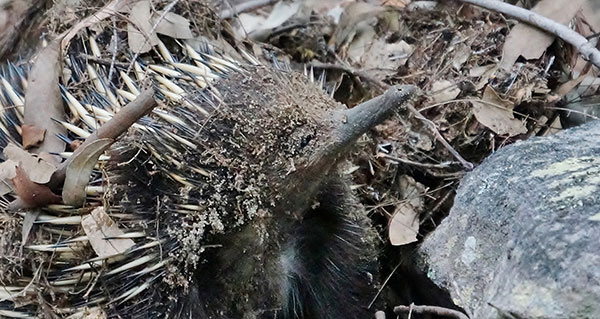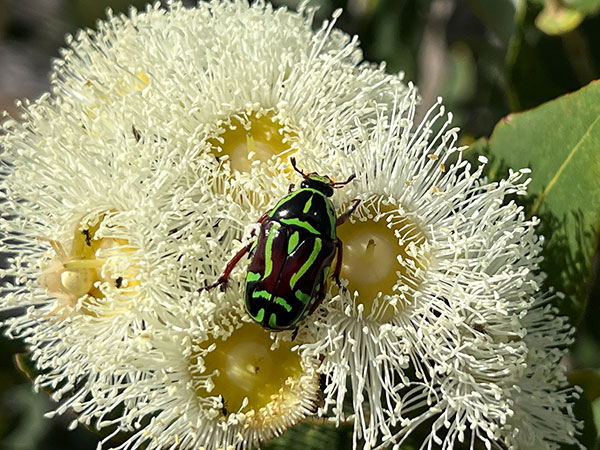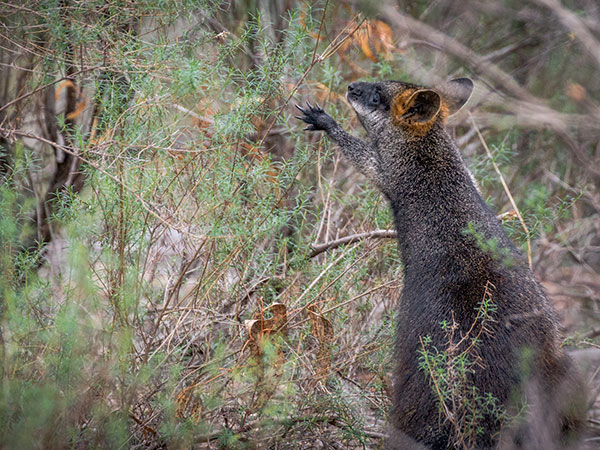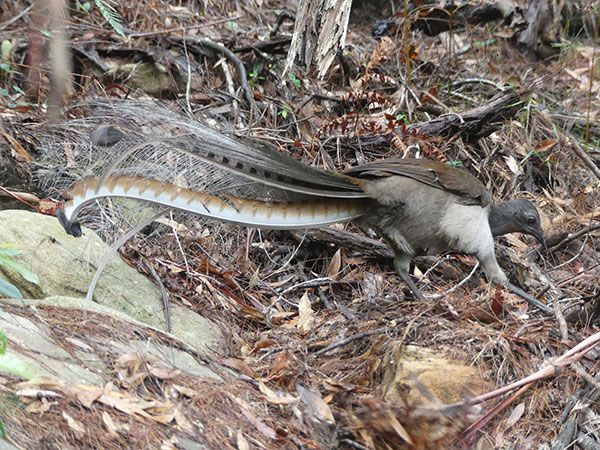Caring for habitat

Photo credit: David Hooper
The word habitat means the place or places where an animal lives. Habitat includes shelter, water, food, and space. Every type of living thing has its own unique set of habitat requirements, essential for living, growing and reproducing.
Hornsby Shire Council’s bushland reserves provide habitat for the many and varied native animals we call wildlife.
From the smallest of creatures, such as the intriguing fiddler beetle (website: Australian Museum) through to larger mammals and birds, such as the swamp wallaby swamp wallaby (website: iNaturalist) and superb lyrebird (website: NSW Environment and Heritage) thousands of different types of wildlife live in the Bushland Shire. You will find many of them on the iNaturalist website.
 The uniquely patterned fiddler beetle lays its eggs in or under rotting logs in bushland. The young grubs feed on and form their cocoons from the rotting wood.
The uniquely patterned fiddler beetle lays its eggs in or under rotting logs in bushland. The young grubs feed on and form their cocoons from the rotting wood.
They depend on wood that has fallen from trees and has been left on the ground for some years to decompose. If fallen branches are removed from bushland reserves, the fiddler beetle will lose its food and shelter, and will be unable to reproduce or grow into its adult stage. The adult fiddler beetle is an important pollinator of Hornsby Shire's incredible wildflowers.
To protect this beautiful beetle and our wildflowers, please do not collect firewood from bushland reserves.
Photo credit: Margaret Sky: iNaturalist
 Swamp wallabies mostly eat plants, particularly shrubs, so they rely on bushland with healthy soils and a rich, green understorey beneath the trees.
Swamp wallabies mostly eat plants, particularly shrubs, so they rely on bushland with healthy soils and a rich, green understorey beneath the trees.
Most bushland in Hornsby Shire has soil formed from sandstone. Sandstone-derived soils are naturally very low in the nutrients that support plant growth, and they hold little water. That is, unless they contain humus. Humus is the dark brown organic material formed by decomposing living things, especially fallen leaves and wood.
Humus mixes in with the sandstone grains, adding nutrients and water-holding fibres to form healthy soil that supports plant growth. If fallen branches are removed from bushland reserves, the amount of humus formed is greatly reduced, shrub growth will decline and swamp wallabies will have difficulty finding food.
To protect our treasured swamp wallabies, please do not collect firewood from bushland reserves.
Photo credit: R Taylor: iNaturalist
 Superb lyrebirds feed mainly on insects, spiders, frogs and other small animals that live on the forest floor. They find their food by raking through the leaf litter and soil using their powerful legs with long toes and claws.
Superb lyrebirds feed mainly on insects, spiders, frogs and other small animals that live on the forest floor. They find their food by raking through the leaf litter and soil using their powerful legs with long toes and claws.
The small animals the superb lyrebird is searching for include those that eat and shelter under rotting wood, leaves and sticks. Such critters include slaters, various worms and plant-eating insects. Without plenty of rotting wood on the forest floor, these little animals aren't able to survive and the superb lyrebird's food supply is much reduced.
Fallen wood is not just needed for dietary reasons. The superb lyrebird's nest is made of sticks, collected and made into a mound on the ground. If fallen branches are collected for firewood, the superb lyrebird will lose its food and may not have sufficient material to build its nest and reproduce.
To protect our delightful superb lyrebirds, please do not collect firewood from bushland reserves.
Photo credit: Andrew Pavlov: iNaturalist
What can you do?
- Never remove fallen branches or standing deadwood from bushland reserves to use as firewood, or for other purposes.
- Never remove rocks or other natural elements from bushland reserves to use in your garden.
- Enjoy a bushwalk but please always stay on formed tracks and trails.







